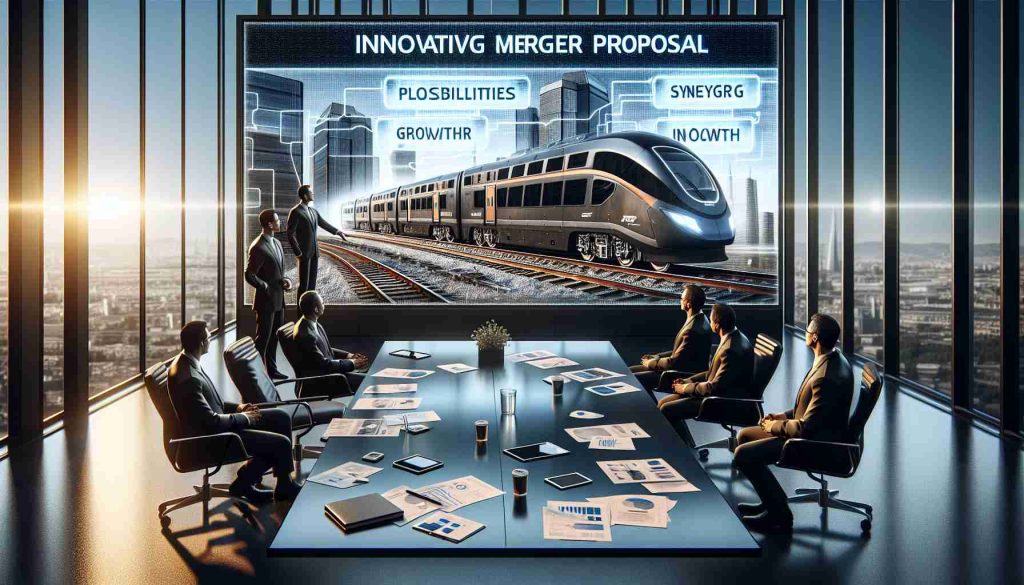Skoda has recently sent a fresh communication to Talgo outlining a visionary proposal for an industrial collaboration between the two companies. Rather than a straightforward acquisition bid, Skoda’s objective is to explore innovative avenues for merging their operations.
The new approach from Skoda emphasizes a strategic partnership focused on combining industrial strengths and expertise. This shift in direction signals a departure from the conventional route of outright privatization or engaging in a bidding war.
Unlike the aggressive bid by Magyar Vagon for full control of Talgo, Skoda’s proposal hints at a more collaborative and forward-thinking strategy. By seeking to foster a mutually beneficial relationship through an industrial combination, Skoda is opening the door to new possibilities for growth and innovation for both companies.
This unconventional proposal sets the stage for a potential transformation in the industry landscape, with Skoda and Talgo at the forefront of exploring synergies and creating value through strategic collaboration. As the dialogue between Skoda and Talgo evolves, industry observers are eager to witness the outcome of this pioneering approach to partnership and growth.
Skoda’s Innovative Merger Proposal to Talgo: Exploring Uncharted Territory in Industrial Collaboration
In the wake of Skoda’s groundbreaking proposal to Talgo for an industrial collaboration, it is essential to delve deeper into the nuances surrounding this visionary approach. While the previous article highlighted the shift towards a partnership-oriented model, several critical questions arise, shedding light on the complexities and potential implications of this merger proposal.
Key Questions:
1. What strategic advantages does Skoda bring to the table in this proposed merger?
Answer: Skoda’s renowned expertise in engineering and manufacturing, particularly in the automotive sector, could complement Talgo’s strengths in railway technology. This synergy might lead to innovative solutions and enhanced competitiveness in the transport industry.
2. How would the proposed merger impact the market dynamics within the transportation sector?
Answer: The consolidation of Skoda and Talgo could disrupt traditional market structures, potentially reshaping the competitive landscape and influencing industry trends. Customers may benefit from a wider range of integrated products and services resulting from this collaboration.
Challenges and Controversies:
One of the primary challenges associated with the proposed merger is the integration of diverse corporate cultures and operational processes. Ensuring a smooth transition while leveraging the unique strengths of each company poses a complex task. Additionally, regulatory hurdles and potential resistance from stakeholders could create roadblocks to the successful execution of this merger.
Advantages and Disadvantages:
Advantages:
– Enhanced innovation through cross-pollination of technological expertise.
– Increased market presence and competitive edge in the transportation sector.
– Potential cost efficiencies and economies of scale through shared resources and synergies.
Disadvantages:
– Operational integration challenges leading to potential disruptions in business continuity.
– Regulatory scrutiny and compliance requirements could prolong the merger process.
– Dilution of brand distinctiveness and identity in a consolidated entity.
As Skoda and Talgo navigate through the intricacies of their merger proposal, the industry awaits the unfolding of this transformative endeavor with keen interest. Should this collaboration come to fruition, it could set a precedent for future mergers in the transportation sector, underscoring the importance of strategic partnerships in driving innovation and sustainable growth.
For more insights on industrial collaborations and emerging trends in the transport industry, visit Skoda and Talgo.










More Stories
New Legislation Imposes Fines on Airlines for Hand Luggage Charges
Expanding Renewable Energy Contracts Leads to Legal Accusations
Changes in the Tax System for Independent Workers in 2025